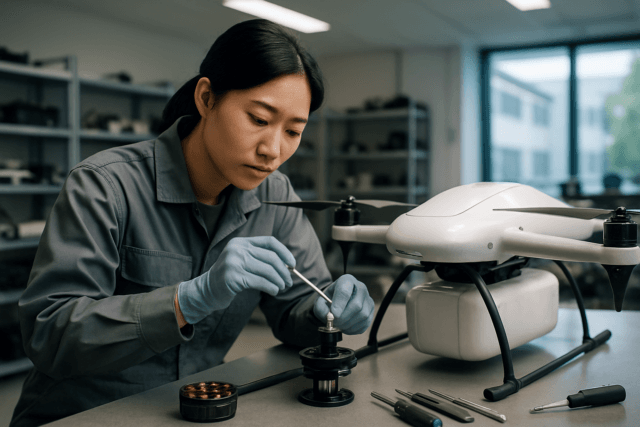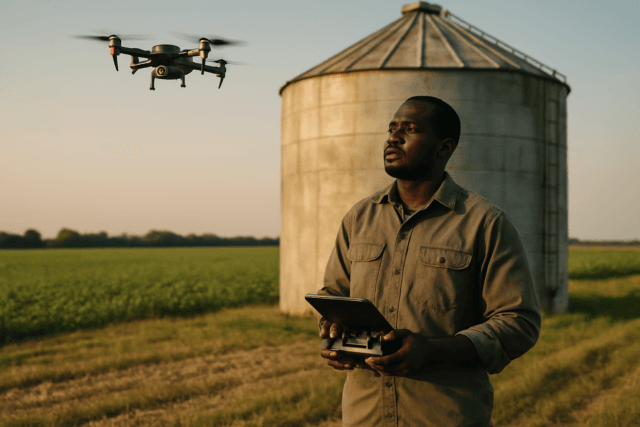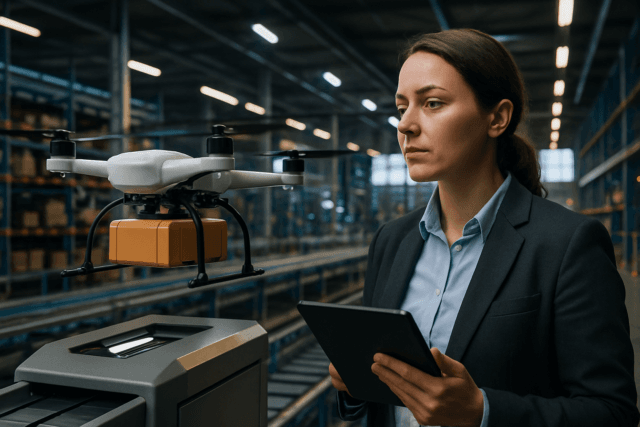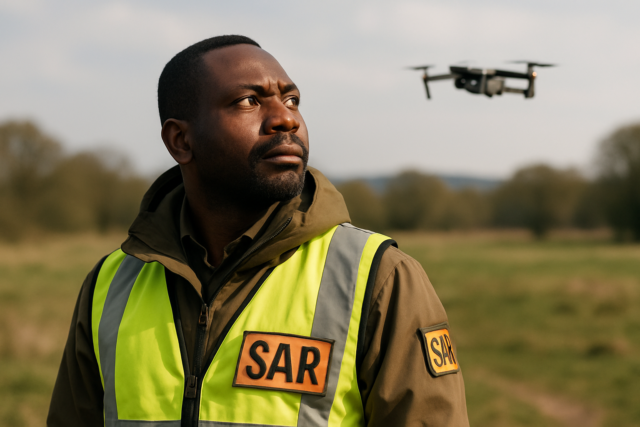Transportation corridors—highways, railways, waterways, and pipelines—are the lifeblood of global commerce and connectivity. Their vast and often remote nature makes them inherently challenging to secure against a myriad of threats, from vandalism and theft to smuggling, terrorism, and accidental disruptions. Traditional surveillance methods often fall short, constrained by cost, human resource limitations, and geographical barriers. This is where the capabilities of Unmanned Aerial Vehicles (UAVs), commonly known as drones, are revolutionizing security paradigms, offering unprecedented levels of monitoring, response, and overall situational awareness.
Drones are no longer a futuristic concept in security; they are a rapidly evolving, indispensable tool. Equipped with advanced sensors, high-resolution cameras, and AI-powered analytics, UAVs provide a dynamic and cost-effective solution for safeguarding critical infrastructure, transforming how security personnel approach the protection of these vital arteries.
The Multifaceted Role of Drones in Transportation Security
Drones provide a versatile platform for numerous security applications across different types of transportation corridors. Their ability to cover large areas quickly, access difficult terrain, and operate in various conditions makes them highly effective.
Comprehensive Surveillance and Monitoring
One of the primary benefits of drones is their capacity for real-time, aerial surveillance over extensive and linear transportation networks. Unlike fixed cameras or ground patrols, drones offer a mobile, elevated perspective that can quickly identify anomalies.
- Highways and Roads: Drones can provide an aerial view of highway networks to assess traffic patterns, congestion, and potential safety issues in real-time. They are used for monitoring road conditions, identifying hazards like potholes or waterlogged areas, and even inspecting construction sites. This capability extends to supporting law enforcement and emergency services by sending real-time video and data during accidents or traffic jams, aiding quicker decision-making and reducing response times.
- Railways: For railway networks, drones offer a safe and efficient way to monitor vast areas. They can inspect tracks, bridges, and tunnels for defects like cracks, corrosion, or vegetation overgrowth. Drones can also patrol perimeters to detect trespassers or suspicious activities and provide real-time views during emergencies such as accidents or natural disasters, guiding rescue teams.
- Ports and Maritime Borders: In port security, drones offer continuous perimeter monitoring, countering smuggling threats, and enhancing the capabilities of port security units. They can patrol areas difficult or unsafe for humans, such as checking fence-line breaches or inspecting restricted areas when other detection systems fail.
- National Borders and Remote Corridors: Drones are increasingly used by border patrol agencies to monitor critical areas, especially in remote or rugged terrain. They provide rapid area coverage, quickly deploying to strategic crossings or hard-to-reach locations. Equipped with advanced sensors and high-resolution imaging, including thermal cameras, they can detect heat signatures in darkness, aiding in tracking individuals involved in illegal activities and deterring illicit crossings.
Infrastructure Inspection and Maintenance
Beyond immediate security, drones play a crucial role in proactive maintenance, which directly contributes to corridor security by preventing failures.
- Bridges and Tunnels: Drones can swiftly inspect inaccessible and perilous sections of bridges and tunnels, capturing high-resolution data to identify structural issues like cracks, erosion, or corrosion. This data can be used to create detailed 3D models for accurate damage detection and maintenance planning.
- Pipelines and Utilities: For vast linear infrastructure like pipelines or power lines, drones equipped with thermal imaging can detect anomalies, identify unauthorized personnel, or monitor environmental impacts, reducing the need for disruptive manual inspections.
Incident Response and Situational Awareness
In the event of an incident, drones act as invaluable first responders, providing critical information rapidly and safely.
- Accident Assessment: Drones can quickly survey accident sites, providing aerial views to assess damage, identify hazards, and guide emergency teams, reducing response times and preventing further congestion.
- Search and Rescue: For corridors that traverse remote or hazardous environments, drones can quickly survey large areas to locate missing persons or assess disaster-stricken zones, minimizing risks to human search teams.
- Real-time Intelligence: By streaming live video and data, drones enhance situational awareness for security personnel, enabling informed decision-making during rapidly evolving situations such as unauthorized access or suspicious activity.
Key Benefits of Integrating Drones
The adoption of drones for transportation corridor security brings several compelling advantages:
- Enhanced Situational Awareness: Drones provide a bird’s-eye view, allowing security teams to monitor large or complex environments in real-time. Equipped with optical zoom and thermal imaging, they can reveal details often invisible from the ground.
- Rapid Deployment and Mobility: Drones can be launched quickly and maneuvered to wherever they are needed, making them ideal for dynamic situations where speed and flexibility are crucial. Autonomous flight capabilities allow for quick deployment without constant human control.
- Cost Efficiency: Drones significantly reduce the cost of security operations compared to traditional methods like manned aircraft patrols or extensive ground teams. They save time, labor, and resources, especially for inspecting large, remote, or difficult-to-access areas.
- Increased Safety for Personnel: By undertaking hazardous inspections or surveillance in dangerous areas, drones minimize risks for human security personnel, preventing exposure to traffic, heights, or potentially hostile situations.
- Data Accuracy and Analytics: Drones equipped with high-resolution cameras, LiDAR, and other sensors collect precise data, which can be processed using AI-powered analytics to identify defects, track patterns, and predict maintenance needs, ensuring more informed decision-making.
- Deterrence: The visible presence of drones can act as a powerful deterrent against illegal activities, discouraging potential trespassers, smugglers, or vandals.
Challenges and Considerations
Despite the significant advantages, the widespread integration of drones into transportation corridor security faces several challenges:
- Regulatory Hurdles and Airspace Management: Governments are cautious about integrating drones into already crowded airspace. Operators must navigate strict rules regarding flight paths, altitude, and licensing. Developing “drone corridors” or “sky lanes” is one solution being explored to manage drone traffic safely.
- Technological Limitations:
- Battery Life and Range: Many drones have limited battery life and range, restricting their operational duration and coverage area, although advancements are continuously being made. Automated battery exchange systems and drone-in-a-box solutions are emerging to provide continuous monitoring.
- Payload Capacity: Limited payload capacity can restrict the types and number of sensors or equipment a drone can carry.
- Weather Sensitivity: Drones can be affected by strong winds, rain, and extreme temperatures, which can make consistent operation challenging and impact sensor functionality. However, some advanced systems are designed to operate effectively in adverse weather conditions.
- Cybersecurity Risks: Drones, as internet-connected devices, are vulnerable to cyber-attacks, posing risks of data theft, hijacking, or disruption of critical services. Securing drone systems and their data is paramount.
- Privacy Concerns and Public Acceptance: The use of camera-equipped drones raises significant concerns around surveillance and data privacy. Public sentiment, including concerns about noise, visual pollution, and potential malfunction, needs to be addressed for widespread acceptance.
- Integration with Existing Systems: Seamlessly integrating UAVs with existing security systems, communications networks, and intelligent transportation systems requires powerful APIs and careful planning to ensure a united front for holistic surveillance.
The Future of Drone-Enhanced Corridor Security
The future of drones in securing transportation corridors is marked by continuous innovation. Expect to see further advancements in:
- AI-Driven Autonomy: Drones will become even more autonomous, capable of self-inspection, diagnosis, and potentially initiating preemptive actions without extensive human intervention. AI-powered analytics will enable real-time fault detection and predictive maintenance.
- Swarm Technology: Coordinated fleets of drones (swarms) could inspect and monitor entire grids or vast corridors, radically changing response times and long-term asset management.
- Advanced Sensor Integration: The development of more sophisticated sensors, including LiDAR for detailed 3D modeling, thermal imaging, and advanced zoom capabilities, will continue to enhance detection and data collection.
- Counter-UAS (C-UAS) Systems: As drone use proliferates, so will the need for systems to detect, track, and neutralize unauthorized or “rogue” drones that pose security threats.
- Regulatory Evolution: As technology matures, regulatory frameworks will adapt to enable more complex and widespread drone operations, including designated drone highways and clearer guidelines for integration into national airspace.
Drones are rapidly transforming the security landscape for transportation corridors. By offering unmatched aerial surveillance, efficient inspection capabilities, and rapid incident response, they are becoming an indispensable component of modern security strategies, promising safer, more efficient, and more resilient transportation networks for the future.





